The traditional garden shed has long been a staple in backyards around the globe, serving as a storage space for tools, lawnmowers, and gardening equipment.
However, with the advent of sustainability and innovative design, a new contender has emerged: the shipping container garden shed.
These durable, steel structures offer a unique blend of resilience, customization, and aesthetic appeal, challenging the status quo of garden outbuildings.
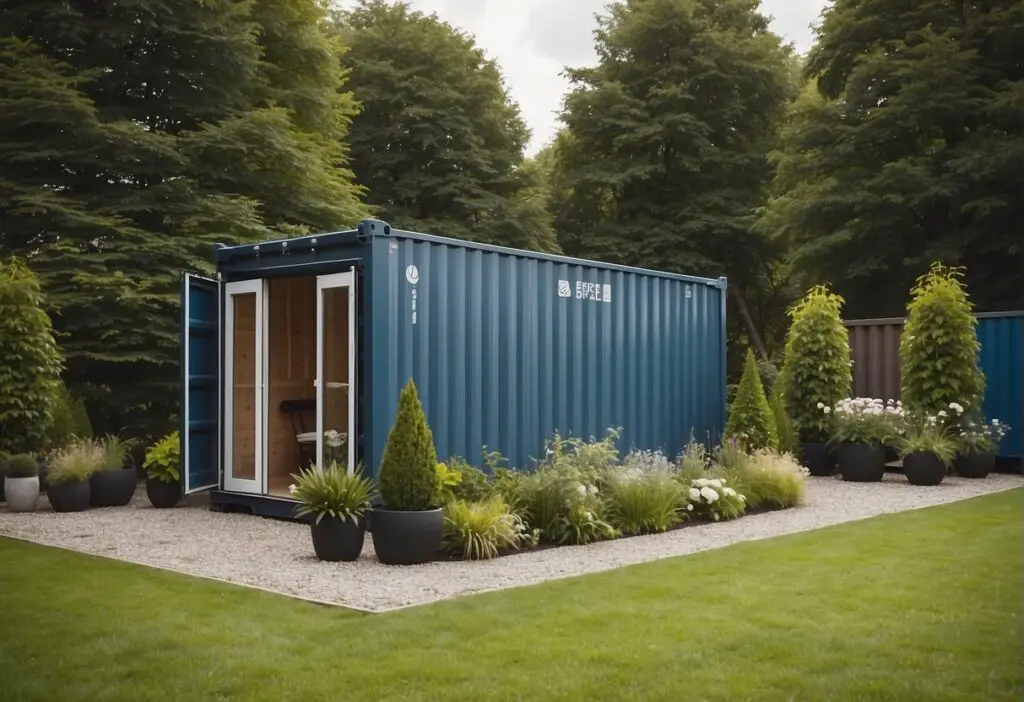
Shipping containers, once used exclusively for transport and cargo, have found a new lease on life as versatile and eco-friendly alternatives to conventional garden sheds.
They provide a opportunity for homeowners to repurpose these robust units into garden rooms, offices, or workshops.
With the land impact of traditional construction ever under scrutiny, these container cabins stand out as a thoughtful choice for the environment and a practical solution for space management.
Why Choose a Container Cabin Over Traditional Garden Sheds
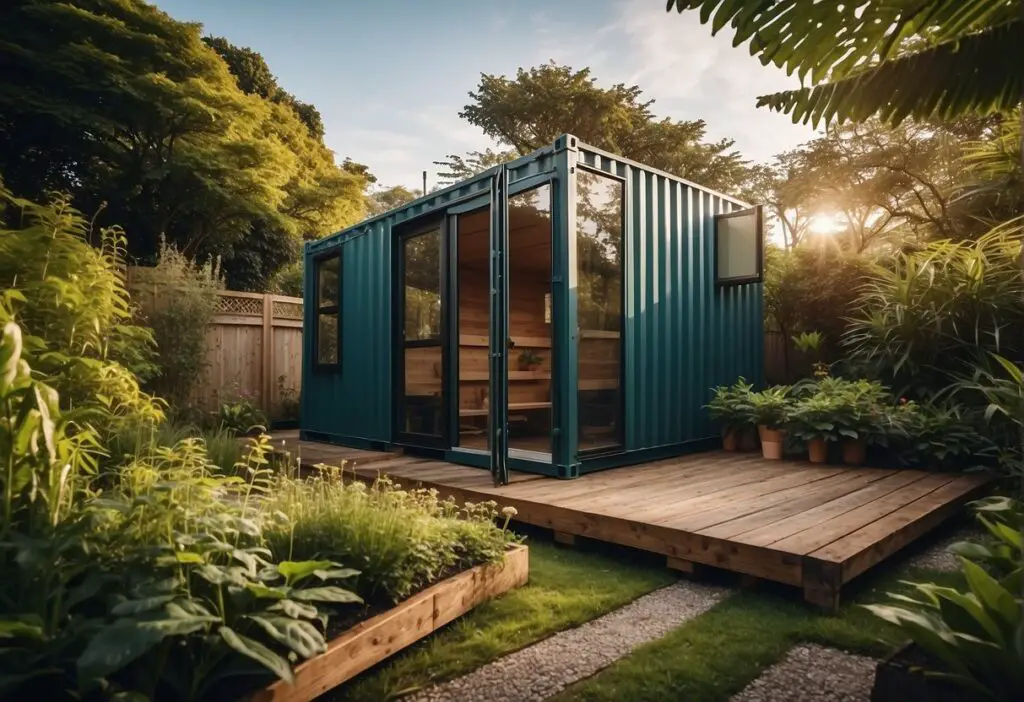
Container cabins offer a modern twist to outdoor spaces, providing a sleek and versatile alternative to traditional garden sheds.
The benefits of choosing a container cabin for your garden or outdoor area include:
Increased Durability
- Container cabins are built from steel, granting them a higher level of resilience against weather.
- They resist rot and pests, unlike wooden sheds, ensuring a longer lifespan.
Customizable
- They can be easily modified, painted, and styled to fit any preference or garden theme.
- The interior can be insulated and fitted with utilities, making them suitable for year-round use.
Eco-Friendly
- Many container cabins are made from recycled shipping containers, reducing waste.
- They often require less building material than a traditional shed.
Space Efficiency
- Their uniform shape maximizes interior space usage.
- They can be stacked or easily modified to increase storage or living space without a larger footprint.
Ease of Installation
- Installation of a container cabin is typically quicker than building a traditional shed.
- They can be transported to the site fully assembled, ready for immediate use.
Versatility
- Container cabins are not only for storage; they can serve as home offices, artist studios, or guest rooms.
- Their sturdy nature allows for safe storage of valuable tools and equipment.
The investment in a container cabin represents a blend of functionality and modern design, ideal for those seeking a durable, eco-friendly, and versatile garden building.
Comparing Container Cabins and Garden Sheds
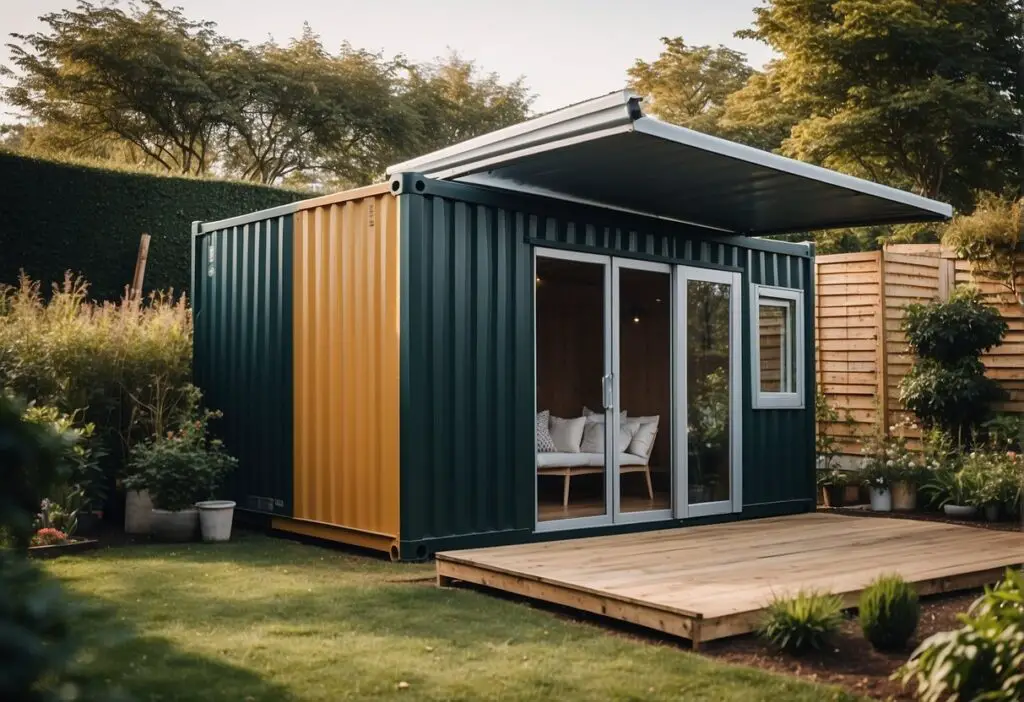
Container cabins present a robust and versatile alternative to traditional garden sheds, offering greater durability and the potential for personalization, all while keeping an eye on cost-effectiveness and the environment.
Durability and Longevity
Container cabins are constructed from highly durable, 14-gauge Corten steel, allowing them to withstand harsh weather conditions and provide increased protection from wildlife.
In contrast, garden sheds, especially those made from wood, can be susceptible to rot, infestation, and weather-related damage. This makes container cabins a substantially more resilient option for long-term use. For detailed insights, consider reading about the benefits of shipping container sheds.
Customization and Flexibility
With container cabins, the options for customization are nearly limitless. They can be modified with additions such as windows, insulation, and custom paint jobs.
On the other hand, traditional garden sheds offer less flexibility, often confined to the designs and materials provided by manufacturers. A shipping container garden shed can be uniquely tailored to fit a variety of needs and aesthetic preferences.
Cost Effectiveness
Initially, the investment in a container cabin might seem higher than that of a garden shed. However, due to their longevity and reduced maintenance costs, container cabins can be more cost-effective in the long run.
Moreover, shipping containers are increasingly recognized as an affordable alternative with sturdy construction that outlasts standard wooden structures.
Environmental Impact
Repurposing shipping containers for use as cabins and sheds contributes to environmental conservation by reducing the demand for new raw materials.
While both options have an environmental impact, a garden shed may involve deforestation if constructed of wood, and may not last as long as a shipping container, potentially contributing to waste.
Considering a container’s long lifespan, utilizing one as a garden shed represents a practice in sustainability, as highlighted in a collection of garden shed ideas featuring shipping containers.
Fundamentals of Container Cabin Conversion
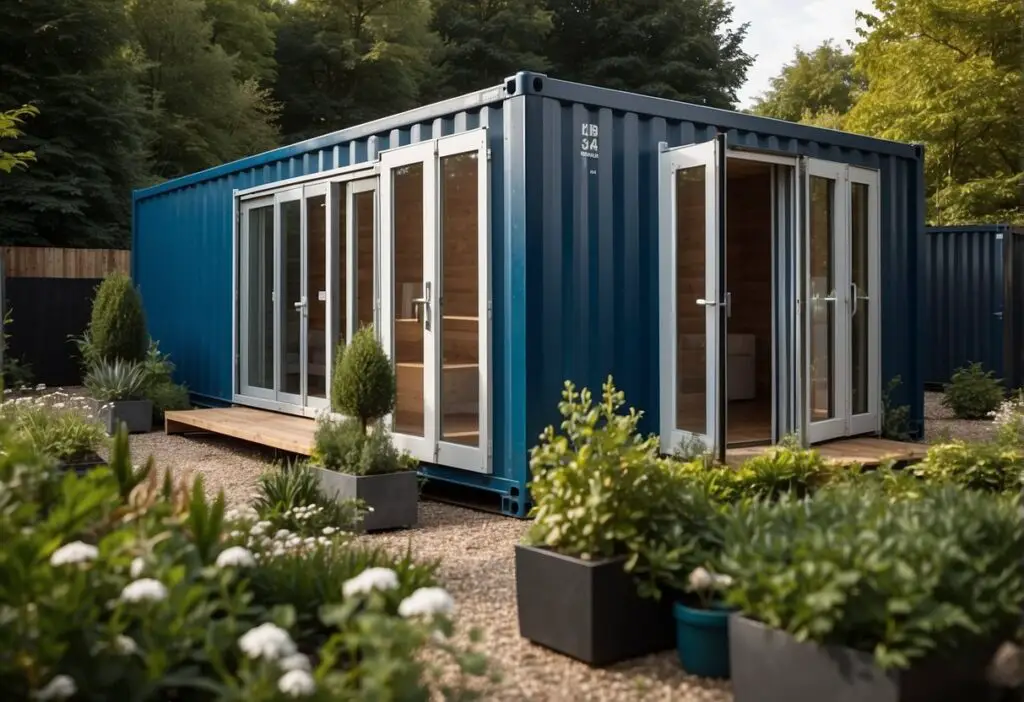
When exploring the transformation of a shipping container into a cozy and functional cabin, it’s essential to focus on choosing the optimal container, employing sound design principles, and ensuring all regulatory requirements are met.
Selecting the Right Shipping Container
One’s quest for the perfect container cabin begins with selecting the appropriate shipping container.
Opt for one that is structurally sound, free of corrosion, and adequate in size for your needs. It is also crucial to decide between new or used containers; while new ones are more expensive, they often require less repair and preparation.
Design Principles for Container Cabins
Designing a container cabin demands a blend of creativity and practicality.
Effective insulation is imperative for comfort, often utilizing spray foam for temperature control.
Placement of windows and doors should maximize natural light and ventilation while maintaining structural integrity.
Additionally, interior design should maximize the limited space, retaining functionality without sacrificing style.
Necessary Permits and Compliance
Container cabin construction typically requires a range of permits, with regulations varying by location.
It is imperative to understand and comply with local building codes, zoning laws, and any community covenants.
Prior to construction, seek out necessary inspections to avoid future legal and safety issues, thereby ensuring your cabin is a lawful and safe abode.
Innovative Design Ideas for Container Cabins
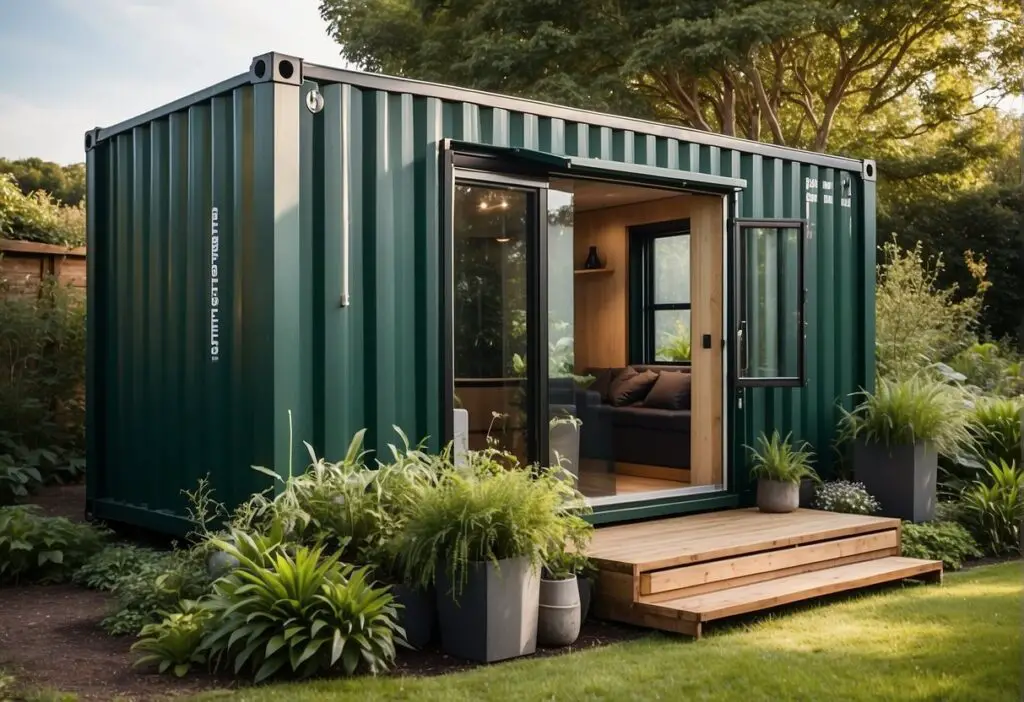
Container cabins offer the unique advantage of blending functionality with creative design. They foster an innovative approach to living structures through their adaptability and sustainable potential.
Incorporating Sustainable Features
- Solar Panels: By installing solar panels on the roof, container cabins can harness solar energy, reducing reliance on traditional power sources and promoting green living.
- Rainwater Harvesting: She can integrate rainwater collection systems to utilize natural water sources, protecting the environment and lowering utility costs.
Maximizing Small Spaces
- Foldable Furniture: One can optimize interior space in a container cabin by using foldable or multifunctional furniture, transforming the area according to needs.
- Vertical Gardens: Plant lovers can turn to vertical gardening to enhance both aesthetics and functionality, making the most of limited outdoor space.
Aesthetic Considerations
- Exterior Paint: An array of vibrant exterior paints can be used on the container’s steel structure to make it visually appealing and protect against the elements.
- Interior Finishes: Using high-quality materials for interior finishes creates a welcoming and stylish space, perfect for both living and reception.
Implementation Process
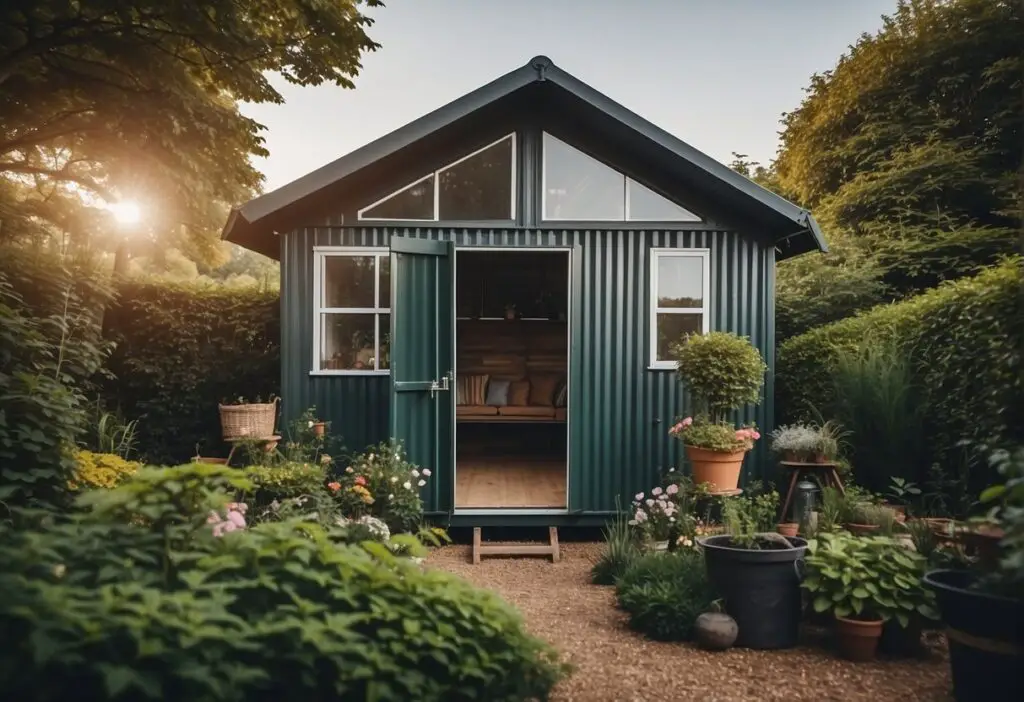
The implementation of transforming a garden shed into a container cabin alternative involves meticulous planning and execution.
Container cabins offer a robust and customizable option for a variety of uses, with the flexibility to tailor to individual preferences or site requirements. Here’s what one needs to know about the process.
Site Preparation
Before a container cabin can be installed, the designated site needs to be properly prepared.
- Leveling the ground to provide a stable base.
- Laying a foundation, such as concrete pads, piers, or a full slab, to support the weight of the container.
- Ensuring easy access to the site for delivery.
Container Modification Techniques
Container cabins require modifications to meet the desired form and function.
- Cutting openings for windows and doors using proper safety equipment and protocols.
- Reinforcing cutouts with frames to maintain structural integrity.
- Incorporating custom features such as built-in furniture or partition walls.
Insulation and Climate Control
Appropriate insulation and climate control are critical for creating a comfortable container cabin. This may involve:
- Installing insulation materials like spray foam or rigid panels on the walls, roof, and floor.
- Sealing all cracks and gaps to prevent drafts and thermal bridges.
- Equipping the cabin with efficient HVAC systems for temperature regulation.
Through these steps, one can effectively convert a simple garden shed into a versatile and sustainable container cabin.
Interior and Exterior Finishing Touches
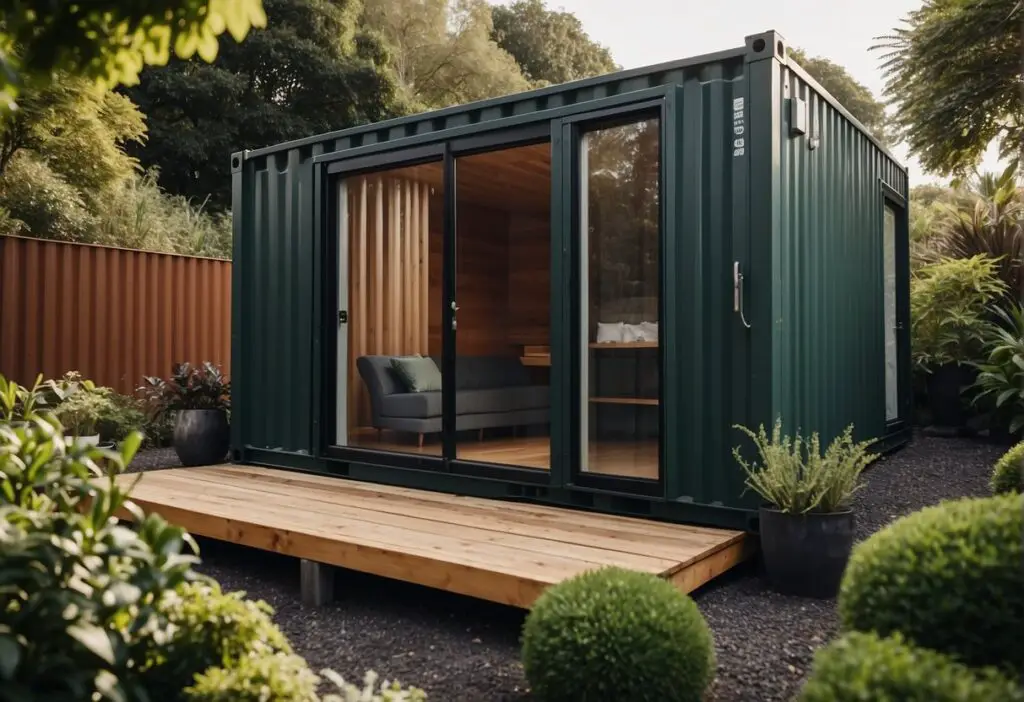
Container cabins offer a modern twist to traditional garden sheds with greater potential for customization. The right finishing touches can transform them into highly personalized and functional spaces.
Interior Design Strategies
Applying interior design strategies can turn a container cabin into an inviting retreat, workspace, or hobby area.
The use of Beadboard for wall paneling offers a traditional wood look that is both functional and aesthetically pleasing, resisting twisting and decay.
For walls that have suffered wear and offer insulation and resilience against wood-damaging insects, see BillyOh.com’s recommendations.
Utilizing multifunctional furniture and built-in storage maximizes space efficiency. Meanwhile, strategic color choices and lighting can enhance the ambiance, making the compact space feel larger and more welcoming.
Exterior Enhancements
The exterior of a container cabin presents a canvas for personal expression and ensures the structure integrates well with its surroundings.
Durability is key; thus, starting with a good foundation of wood preservation techniques is essential for longevity.
Products that minimize algae, rot, and mould are critical in extending the life of wooden elements in exterior design. They can also be key against environmental stressors, as detailed in Wood Finishes Direct’s guide.
Paint can refresh the look of a container cabin, and colors like Scandi neutrals or the shade Dried Thyme SW 6186 are suggested by experts for a tranquil vibe, which can be found at Real Homes’ article on shed paint ideas.
Landscaping and outdoor lighting further enhance the appearance and function of the space, making it an outdoor feature that stands out.
Case Studies: Successful Container Cabin Projects
Project 1: The Forest Retreat
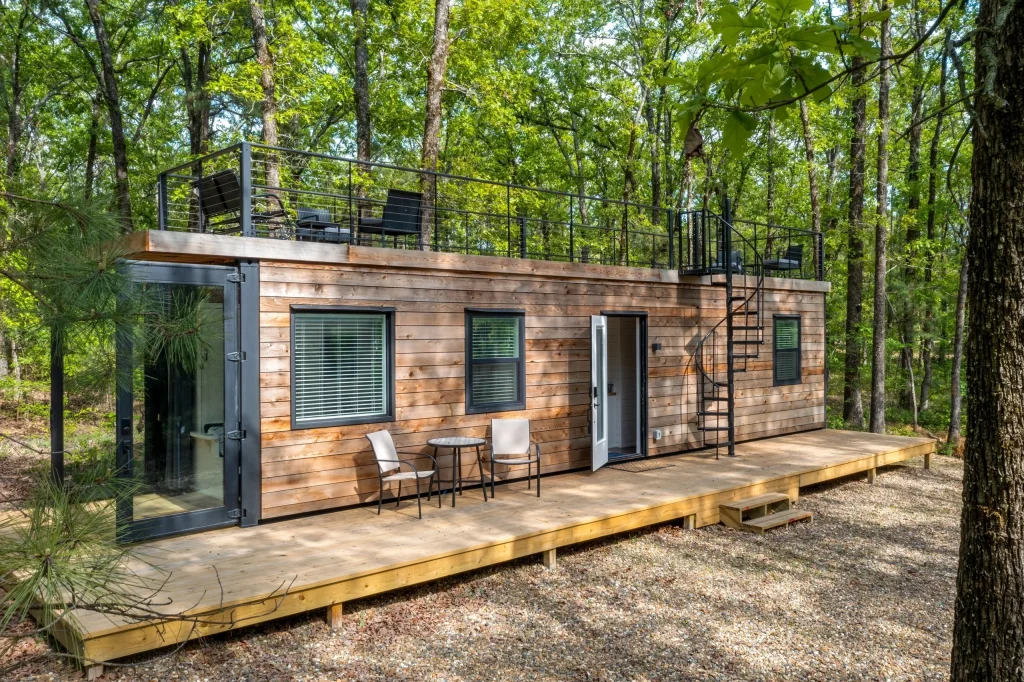
Seek Micro Cabins at The Grove: Unveiling Compact Luxury Retreats – Read More
A of 40-foot shipping containers were transformed into an eco-friendly retreat. The forest view living room features vast glass doors, marrying outside beauty with inside comfort.
Project 2: The Industrial Aesthetic
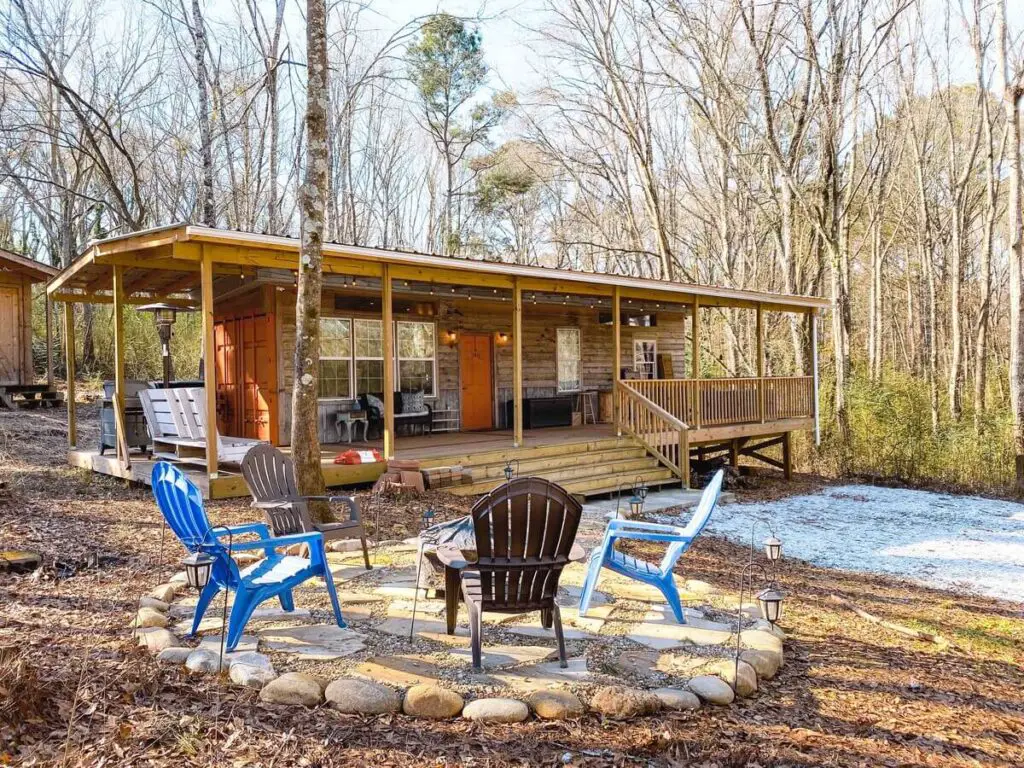
Lucy’s Rustic Retreat: Industrial to Cozy Container Home – Read More
One cabin owner capitalized on the industrial look of their container. By retaining the original elements, such as exposed beams and metal walls, the cabin exudes a modern vibe while demonstrating the versatility of shipping containers in architecture.
| Project | Use of Containers | Unique Features |
|---|---|---|
| The Forest Retreat | 1 x 40-ft for living/bed/bath | Glass doors, integration with nature |
| The Industrial Aesthetic | Single container design | Exposed industrial features |
Project 3: The Off-Grid Haven
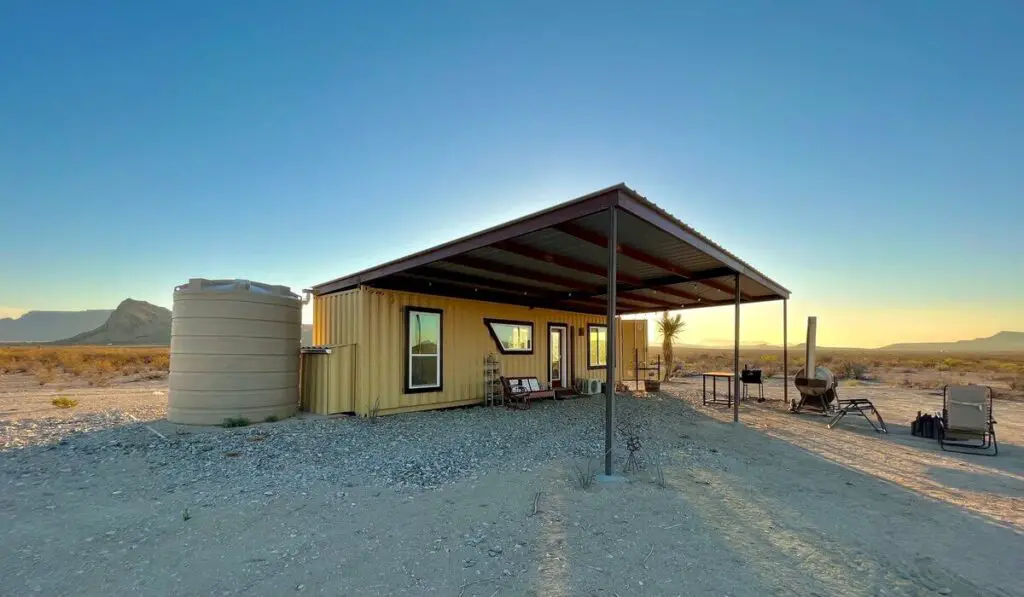
Off-Grid Desert Container Home – Read More
Certain terrain can prove challenging for traditional construction. Shipping containers provided a solution for off-grid living in the desert, showing how these structures adapt to different environments.
Project 4: Compact Design Efficiency
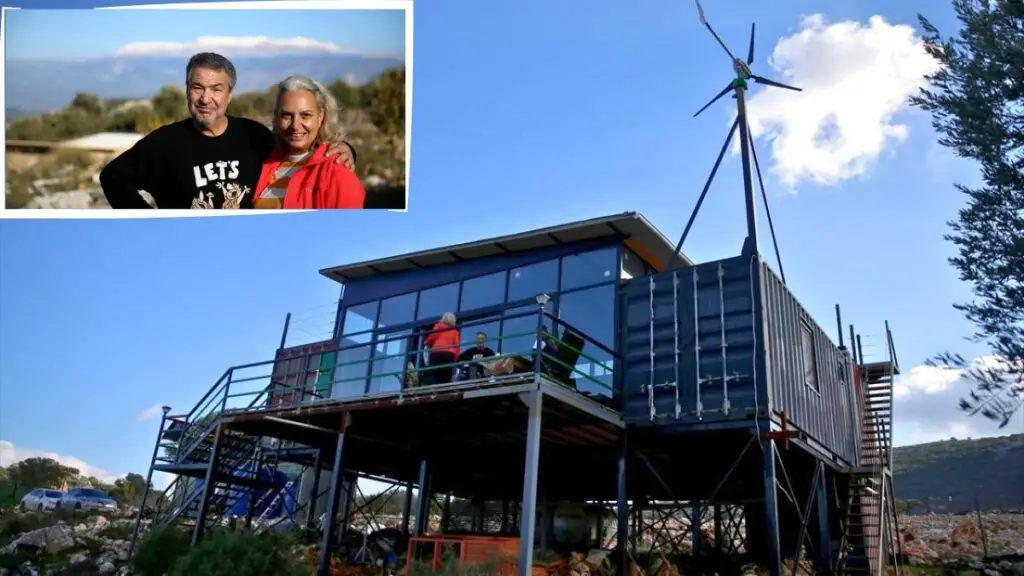
Sustainable Living in a Compact Container Home Fueled by the Sun and Wind – Read More
For those valuing minimalism and sustainability, a shipping container cabin design offers a blueprint for compact and efficient living, without compromising on style or eco-consciousness.
Maintenance and Upkeep for Container Cabins
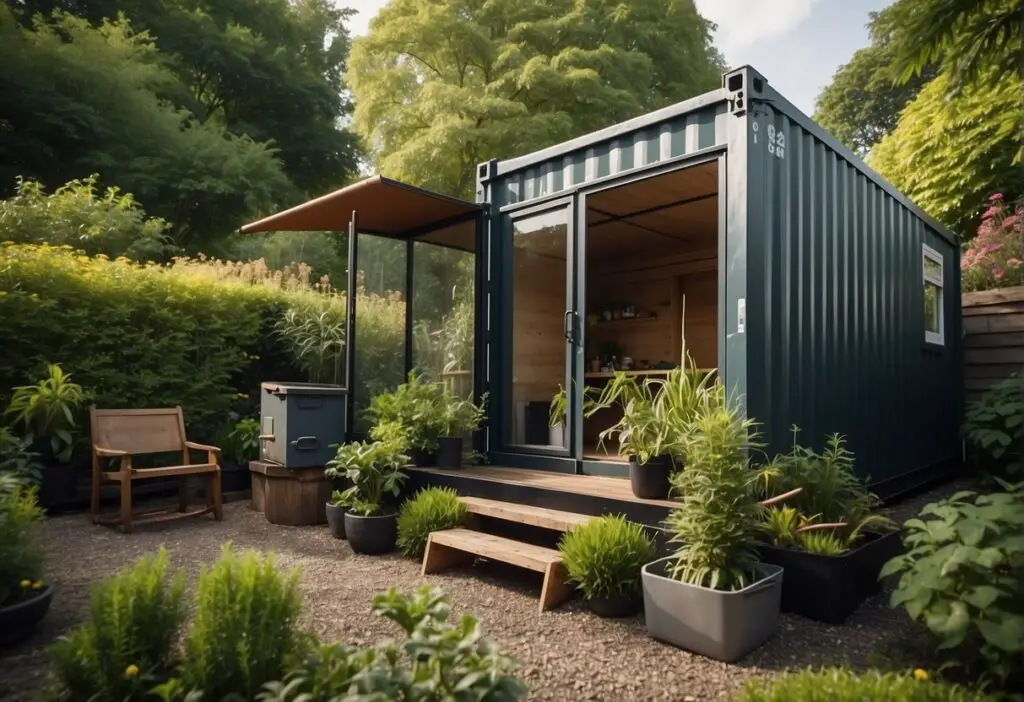
Maintaining a container cabin requires attention to detail and regular checks to ensure its durability and comfort. Below are key practices to keep in mind:
- Rust Prevention: Inspect for signs of rust or corrosion regularly, especially in areas exposed to moisture. Rust can be mitigated by using rust-resistant paint and by fixing leaks promptly.
- Weatherproofing: Check the sealant on doors and windows to prevent leaks and drafts. Reapply sealant as needed.
Structural Integrity:
- Foundation: Ensure the cabin’s foundation remains stable and level. Adjustments may be necessary to prevent structural stress.
- Roof: Look for any signs of water damage or leaks. Clear the roof of debris and ensure proper drainage.
- Insulation: Adequate insulation will maintain internal temperature and reduce energy costs. Verify that it remains dry and intact.
- Energy Use: Consider energy conservation practices such as LED lighting or solar panels.
Cleanliness:
- Interior: Keep the interior clean to prevent mold and pests.
- Exterior: Regularly clean the exterior walls and apply a fresh coat of paint when necessary to preserve aesthetics and protection.
| Periodicity | Task | Notes |
|---|---|---|
| Monthly | Rust and Leak Inspection | Focus on areas with high exposure to elements or movement. |
| Biannually | Roof and Foundation Assessment | Address issues before extreme weather periods. |
| Annually | Insulation and Energy Check | Make updates to improve efficiency. |
Future Trends in Container Cabin Living
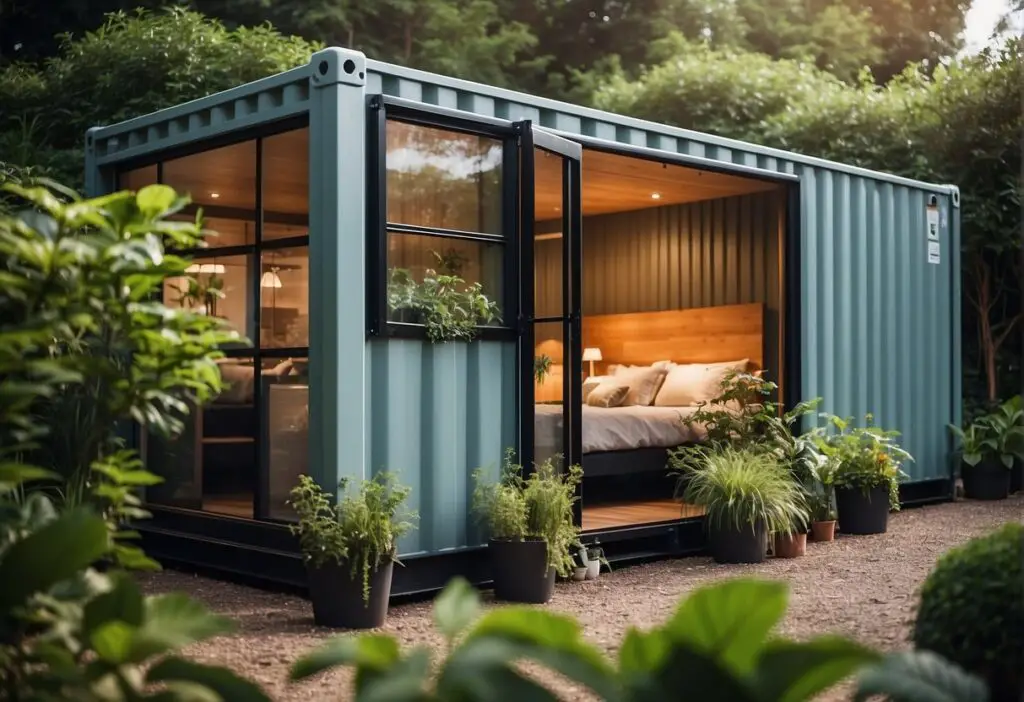
The minimalistic movement combined with a shift towards eco-friendly living suggests container cabins will continue to gain popularity. Here are some anticipated trends:
- Sustainable Features: Innovations in solar panels, rainwater harvesting systems, and composting toilets will become standard in container cabin designs. These features help reduce the ecological footprint of these homes.
- Smart Integration: Container cabins are expected to integrate smart technology. This will allow for remote control of lighting, temperature, and security systems.
- Modularity: The inherent modularity of shipping containers means future developments in container cabins may focus on expandable and reconfigurable designs. This will offer homeowners the ability to customize their space as needs change.
- Customization: Pre-fabricated accessory dwelling units (ADUs) will evolve with a wide range of customization options. These range from basic layouts to elaborate, designer-quality finishes.
- Community Developments: Shipping container housing projects will move towards community-oriented developments. This transition caters to individuals looking for affordable, sustainable, and communal living environments.
